Nicola Cornick's Blog, page 35
February 8, 2011
That First Book…
Whilst I was away on holiday recently I picked up a novel by thriller writer Harlan Coben that I hadn't read before. It was called Play Dead and I liked the sound of the premise. Harlan Coben is on my auto-read list and this book was jacketed like all his recent bestsellers and so I assumed it was new. It was only when I read the author's introduction that I realised that this was a reprint of Coben's first book. And it was only when I read the reviews on Amazon that I realised that a lot of people had an issue with this, but I'm not going to comment on the book itself, or the reader response, since plenty of other people have done that. What interested me was the "disclaimer" at the beginning of the book. In this foreword Coben suggested that if this was the first of his books that I had ever picked up I should put it down and read something else instead to give me a better taste of his writing. He acknowledged that the book had flaws. But he also said that it held a very special place in his heart.
I guess this sums up pretty well how a lot of us feel about our first books. Most authors improve as they go along; a very few produce a perfectly-written book as their first offering. I 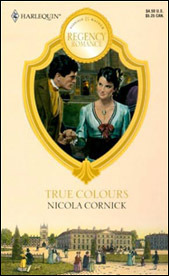 hope I am an improving author. Certainly it's not for the want of trying! When I think of my first book, True Colours, which I started writing when I was 18 and which took me 12 years to complete and get published, I feel a huge affection for it. Yet I also know it's over-written, with a very generous allocation of exclamation marks and three adjectives to every noun. It's also too long. When, a few years ago, I heard that it was going to be reissued, I wanted to re-write it. I probably would have written a disclaimer like Mr Coben's if I had been allowed to do so! And don't even get me started on book number 2…
hope I am an improving author. Certainly it's not for the want of trying! When I think of my first book, True Colours, which I started writing when I was 18 and which took me 12 years to complete and get published, I feel a huge affection for it. Yet I also know it's over-written, with a very generous allocation of exclamation marks and three adjectives to every noun. It's also too long. When, a few years ago, I heard that it was going to be reissued, I wanted to re-write it. I probably would have written a disclaimer like Mr Coben's if I had been allowed to do so! And don't even get me started on book number 2…
When I wrote my first few books I was writing very much on instinct. I'd read a whole library full of Mills & Boon historical romances but I had not consciously analysed how they were constructed or what elements they should include. I didn't know about the Romantic Novelists Association (a pity, because their New Writers' Scheme is a fabulous way to help aspiring authors get published) or the Romance Writers of America, and I hadn't taken any writing courses. I just sat down and wrote the story I wanted to tell. It all seemed pretty straightforward in those days! Mind you, as I said, it took 12 years for the book to be published. The original draft had a highwayman in it…
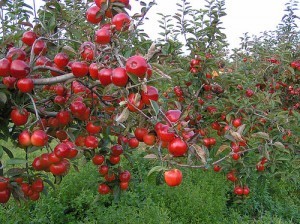 I was thinking about True Colours the other day and reflecting that one thing I try to do with my books has not changed since book 1, and that is to include some unusual and interesting element in the background or setting. With True Colours it was the Somerset Cider Wassail. With my current manuscript, Desired, it is the Spa Fields Riots. So some things don't change. True Colours is set at this time of year when traditionally cider makers would toast the apple trees that brought them their prosperity. The ritual has its basis in pagan folk tradition, the word Wassail coming from the Old English greeting Waes Hael meaning "your good health" or "be healthy." It is a plea to the spirits of the orchard to provide a good crop and celebrations usually include a feast with dancing – and plenty of cider! There are also some obscure traditions such as shooting an arrow into the branches of the trees and banging large sticks together very loudly in order to frighten away the evil spirits. All fabulous fun and all featured in True Colours.
I was thinking about True Colours the other day and reflecting that one thing I try to do with my books has not changed since book 1, and that is to include some unusual and interesting element in the background or setting. With True Colours it was the Somerset Cider Wassail. With my current manuscript, Desired, it is the Spa Fields Riots. So some things don't change. True Colours is set at this time of year when traditionally cider makers would toast the apple trees that brought them their prosperity. The ritual has its basis in pagan folk tradition, the word Wassail coming from the Old English greeting Waes Hael meaning "your good health" or "be healthy." It is a plea to the spirits of the orchard to provide a good crop and celebrations usually include a feast with dancing – and plenty of cider! There are also some obscure traditions such as shooting an arrow into the branches of the trees and banging large sticks together very loudly in order to frighten away the evil spirits. All fabulous fun and all featured in True Colours.
Anyway, back to that disclaimer, because the other thing that Mr Coben mentioned was that one of the reasons he still likes Play Dead was because for all its faults it has a great deal of energy and enthusiasm, something which he sometimes wonders if his later books have lost. I could identify with that too. Once you start to learn a bit about writing technique it's very easy to become bogged down in the "right" way to write and all those "rules" – don't head-hop, always start a new scene if you are changing point of view, do this, do that… Then there's the market to worry about too and whether you're writing what a publisher wants, and how to meet your deadline whilst doing all that social networking, and why didn't you have that fabulous idea that another brilliant author has just come up with… It's easy for all that lovely excitement and energy that characterises the first few books to disappear under a barrage of self-doubt and deadlines and it's one of the worst things that can happen because that excitement and enthusiasm is so precious that it's important to nurture it. So maybe a first book isn't always as technically accomplished as later ones but it usually has something worth cherishing, something of the sheer "I'm so excited to be writing and to be published – woo hoo!" feeling to it. Long may that last!
©2011 Nicola Cornick. All Rights Reserved.
.February 7, 2011
And The Winner Is…
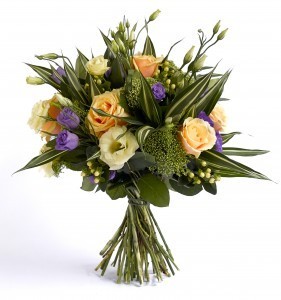 Nettie! Congratulations to Nettie on winning a book in the Regency Day blog contest and thank you to everyone for sharing why you enjoy the Regency period so much. BTW, Nettie has a wonderful blog that I have just discovered – here it is!
Nettie! Congratulations to Nettie on winning a book in the Regency Day blog contest and thank you to everyone for sharing why you enjoy the Regency period so much. BTW, Nettie has a wonderful blog that I have just discovered – here it is!
Later I'm going to be blogging about… Ooh… I'm not sure if it will be about writing or a bit of history or something else… But please join me because I LOVE chatting to you all! Have a great day! Nicola x
©2011 Nicola Cornick. All Rights Reserved.
.February 5, 2011
Celebrating Regency Day!
Today marks the bicentenary of the English Regency. King George III was seventy two and after many years of illness was declared insane. On 5th February, 1811 the Prince of Wales 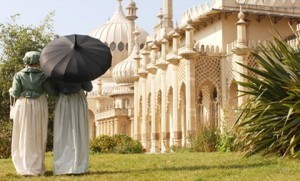 took the oaths of office as Regent and assumed charge of the government. To celebrate the bicentenary, Harlequin is running a special series of Regency features on its blog. An introduction to the celebrations is here! I have blogged about Antonin Careme, the Prince Regent's chef and the first chef to be a celebrity in his own right. If you would like to read my blog piece about Careme and the amazing feasts he served up for the Prince, click here. There's also a recipe for Regency Orange Flower and Pink Champagne Jelly! Throughout the week my fellow Harlequin authors will be blogging on regency related topics so please drop by with your comments on how you became interested in the Regency period, what your favourite aspects of it are, and anything else Regency-related you would like to share!
took the oaths of office as Regent and assumed charge of the government. To celebrate the bicentenary, Harlequin is running a special series of Regency features on its blog. An introduction to the celebrations is here! I have blogged about Antonin Careme, the Prince Regent's chef and the first chef to be a celebrity in his own right. If you would like to read my blog piece about Careme and the amazing feasts he served up for the Prince, click here. There's also a recipe for Regency Orange Flower and Pink Champagne Jelly! Throughout the week my fellow Harlequin authors will be blogging on regency related topics so please drop by with your comments on how you became interested in the Regency period, what your favourite aspects of it are, and anything else Regency-related you would like to share!
If you are in the UK, the Brighton Pavilion is running an amazing exhibition for the rest of the year called Dress for Excess, which displays fashions of the late Georgian period, exploring themes from the Regent's life and the stylistic influences on the period. The exhibition shows items of dress the Regent wore, including a beautifully printed banyan of the 1770s and also his huge breeches worn towards the end of his life (you can blame Careme and his delicious banquets for that!) The most spectacular item is George's extravagant coronation robe, on loan from Madame Tussauds. I can't wait to get down to Brighton to see the exhibition!
So on Regency Day let's raise a glass (of pink champagne, of course!) to the Prince Regent, and please let me know – What is it about the Regency period that appeals to you? I'm giving away a book from my backlist to one commenter in honour of the celebration!
©2011 Nicola Cornick. All Rights Reserved.
.February 4, 2011
The Valentine's Fae
Yesterday I was in the mood for a read that was romantic and funny, sweet and sexy. Lucky for me, then, that fellow author Emma Shortt had sent me a copy of The Valentine's Fae, 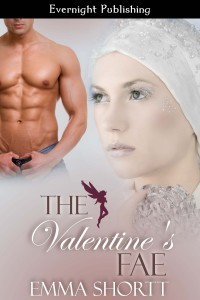 her latest novella. The Valentine's Fae is a delicious treat of a fairy story. I loved the magical world that Emma has created. It's vivid and fun but it's not without its sharp edges. These are fairies with attitude – Amelia, our fae heroine, is adorable, vulnerable but sparky at the same time. And I loved her friend Isadora so much that I hurried off to download her story too. Throw in a hot hero to die for, some laugh out loud moments and a truly original take on the life of a contemporary fairy and this is a perfect romantic – and very sexy - read!
her latest novella. The Valentine's Fae is a delicious treat of a fairy story. I loved the magical world that Emma has created. It's vivid and fun but it's not without its sharp edges. These are fairies with attitude – Amelia, our fae heroine, is adorable, vulnerable but sparky at the same time. And I loved her friend Isadora so much that I hurried off to download her story too. Throw in a hot hero to die for, some laugh out loud moments and a truly original take on the life of a contemporary fairy and this is a perfect romantic – and very sexy - read!
To check out Emma's website and her books click here and to visit her blog click here!
So what are you reading at the moment?
©2011 Nicola Cornick. All Rights Reserved.
.February 2, 2011
Beards – Hot or Not?
Today I am blogging at the Word Wenches about The Beard in History. Do you prefer your historical romance heroes clean shaven 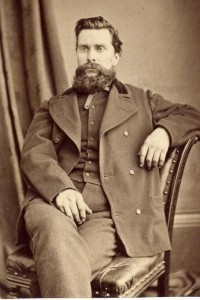 or hirsute? Is the beard hot or not? Come and join us at the Wenches to discuss this important topic!
or hirsute? Is the beard hot or not? Come and join us at the Wenches to discuss this important topic!
©2011 Nicola Cornick. All Rights Reserved.
.February 1, 2011
Shipwreck!
During my recent holiday in the New Forest I visited Hurst Castle, a fascinating fort set out a mile into The Solent and built on a shingle bank. We walked out to the castle and took the 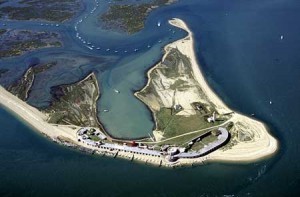 boat back from it. Like Calshot, which I blogged about a little while ago, Hurst was originally built by Henry VIII to guard against the threat of foreign invasion. By the late 18th century the threat from Revolutionary and Napoleonic France was strong and Hurst was modernised and 10 captured French 36 pounder guns were deployed on the beach there. Heavy guns were also carried on the roof of the castle and the basement of the tower was used as a powder magazine. This was a pretty noisome place when I visited, dark, damp, poorly lit and very claustrophobic.
boat back from it. Like Calshot, which I blogged about a little while ago, Hurst was originally built by Henry VIII to guard against the threat of foreign invasion. By the late 18th century the threat from Revolutionary and Napoleonic France was strong and Hurst was modernised and 10 captured French 36 pounder guns were deployed on the beach there. Heavy guns were also carried on the roof of the castle and the basement of the tower was used as a powder magazine. This was a pretty noisome place when I visited, dark, damp, poorly lit and very claustrophobic.
It always interests me how communities grow up in places like Hurst even in the most inhospitable surroundings, a mile out to sea on a spit of land battered by wind and waves. By the early 19th century there were a number of people living there. A lighthouse was built in 1786 and in addition to the lighthouse keepers there were fishermen and soldiers, sufficient to support an inn called The Shipwright's Arms.
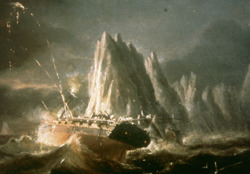 Naturally, Hurst and the Isle of Wight have had their fair share of shipwrecks and a famous one from the Regency period was that of HMS Pomone. At dusk on the evening of 14th October 1811 the Pomone, a 38 gun frigate with a crew of 284 men, struck The Needles off the Isle of Wight. She was returning in haste with secret intelligence crucial to the course of the War, carried by the British Ambassador to Persia, Sir Harford Jones. The ship also carried a number of Arabian horses that were a gift from the Shah of Persia to King George III. The ship was returning after six years in the Mediterranean and had served with distinction at the Battle of Sagone Bay. She was strong and very fast and was sailing at top speed because of the urgency of her mission.
Naturally, Hurst and the Isle of Wight have had their fair share of shipwrecks and a famous one from the Regency period was that of HMS Pomone. At dusk on the evening of 14th October 1811 the Pomone, a 38 gun frigate with a crew of 284 men, struck The Needles off the Isle of Wight. She was returning in haste with secret intelligence crucial to the course of the War, carried by the British Ambassador to Persia, Sir Harford Jones. The ship also carried a number of Arabian horses that were a gift from the Shah of Persia to King George III. The ship was returning after six years in the Mediterranean and had served with distinction at the Battle of Sagone Bay. She was strong and very fast and was sailing at top speed because of the urgency of her mission.
As the ship approached the Isle of Wight the captain, Robert Barrie, handed the ship over, as was the custom to the ship's Master. The Master then  proceeded to make the same mistake that had previously been made in 1752 when the 44 gun frigate HMS Assurance was returning from Jamaica with the retiring Governor Trelawney and £60,000 in treasure he had pillaged in the Caribbean. The Master of the Assurance passed too close to the Needles and grounded on Goose Rock. The Pomone did precisely the same thing. Fortunately the seas were calm and it was possible to ferry off the passengers, crew and valuables. In a particularly resourceful move, the Arabian horses were rescued by pulling them out of the gun ports. No lives were lost.
proceeded to make the same mistake that had previously been made in 1752 when the 44 gun frigate HMS Assurance was returning from Jamaica with the retiring Governor Trelawney and £60,000 in treasure he had pillaged in the Caribbean. The Master of the Assurance passed too close to the Needles and grounded on Goose Rock. The Pomone did precisely the same thing. Fortunately the seas were calm and it was possible to ferry off the passengers, crew and valuables. In a particularly resourceful move, the Arabian horses were rescued by pulling them out of the gun ports. No lives were lost.
The records of the court martial give a vivid account of the drama. One passenger, Major General Sir Francis Wilder, 22 stone and suffering from gout, was sure he was going to drown. He took off all his clothes and jumped from the bowsprit. He was seen in the water and persuaded to return on board and, presumably, to get dressed again. Meanwhile private Marine Bernard Lowry, who was unable to swim, settled down with the ship's supply of grog. He swiftly became completely inebriated and was discovered stealing the passengers' belongings, dressed in one of the passenger's clothes. The court martial acquitted Captain Barrie and his officers of losing the ship but severely reprimanded the Master.
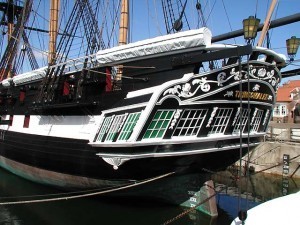 3000 artefacts from the wreck of the Pomone have been discovered off The Needles. The hull of the ship has rotted away but cannon, muskets, shot, ballast, uniform buttons, navigational instruments, pottery, glass and rivets all lie scattered across the sea bed.
3000 artefacts from the wreck of the Pomone have been discovered off The Needles. The hull of the ship has rotted away but cannon, muskets, shot, ballast, uniform buttons, navigational instruments, pottery, glass and rivets all lie scattered across the sea bed.
The Pomone was a typical British ship of the Napoleonic Wars. Two ships of the same class as the Pomone are still afloat. The Trincomalee, built in 1817, is in Hartlepool and the Unicorn, built in 1824, is in Dundee. this is a picture of the Trincomalee.
©2011 Nicola Cornick. All Rights Reserved.
.January 28, 2011
Fall In Love Like A Romance Writer!
At the moment I am eagerly awaiting the arrival of the postman with my copy of Fall In Love Like A Romance Writer. I was absolutely  tickled pink last year when author Amelia Grey contacted me and asked me if I would like to contribute to this anthology of stories of real life romantic relationships. I am a true and unashamed romantic and it is a huge privilege to be included in this collection. Here are a few quotations from the blurb for the anthology, which I hope gives a flavour of the book:
tickled pink last year when author Amelia Grey contacted me and asked me if I would like to contribute to this anthology of stories of real life romantic relationships. I am a true and unashamed romantic and it is a huge privilege to be included in this collection. Here are a few quotations from the blurb for the anthology, which I hope gives a flavour of the book:
"More than 60 beloved, bestselling romance novelists talk about how they met the love of their lives, or how they made their love last through the years, or what they believe makes love and romance timeless. Some of the stories are heart-warming, some are inspiring, and others are filled with humor, but they are all sprinkled with that magical feeling of being in love."
"Readers will enjoy glimpsing into the exclusive and private world of their favorite romance authors. Humorous, poignant, and entertaining from beginning to end, Fall In Love Like a Romance Writer reveals what it takes to have your own happily ever after, just like the ones your beloved writers are creating…and living."
 "Such are the pearls of insight generously dispensed with wisdom, wit, and emotional resonance from the bestselling authors who write all about it in Fall in Love Like a Romance Writer: The Secret Keys to a Long and Lasting Love. Award-winning novelist Amelia Grey takes us on a journey with more than sixty-five of the romance world's most beloved storytellers whose personal experiences with that old black magic reveal a wealth of knowledge about the language of love and what makes it work—or not."
"Such are the pearls of insight generously dispensed with wisdom, wit, and emotional resonance from the bestselling authors who write all about it in Fall in Love Like a Romance Writer: The Secret Keys to a Long and Lasting Love. Award-winning novelist Amelia Grey takes us on a journey with more than sixty-five of the romance world's most beloved storytellers whose personal experiences with that old black magic reveal a wealth of knowledge about the language of love and what makes it work—or not."
"At turns entertaining, thought-provoking, poignant, and unexpected, Fall in Love Like a Romance Writer is far more than a collection of essays. It is a collection of secrets that contain the keys to a love that will endure."
Long live the Happy Ever After!
©2011 Nicola Cornick. All Rights Reserved.
.January 27, 2011
And the winners are…
Jami, a copy of Kidnapped and the Arran Aromatics Scented Candle are on their way to you for the lovely poems you recommended here on  the blog. Thank you to everyone for sharing your favourites!
the blog. Thank you to everyone for sharing your favourites!
The December website contest winner is Josie, who wins a copy of my Brides of Fortune trilogy plus the wonderful Irish-set historical Duchess of Sin by Laurel McKee. I'd like to thank everyone for entering the website contest. I read each and every one of the entries and particularly appreciate the funny ones and the extra comments that you send me! Be assured that I will answer every personal note. It always makes me very happy to chat with readers and fellow authors and historical romance fans, which is why I enjoy this blog so much. And if you would like to email me simply drop me a line at nicola(at)nicolacornick.co.uk. Oh, and there is a new website contest up now to win a copy of my 2008 RITA-nominated book Lord of Scandal. Find the contest here!
 Tomorrow I will be blogging about the lovely book Fall In Love Like A Romance Writer so please come and join me to talk about true life love stories!
Tomorrow I will be blogging about the lovely book Fall In Love Like A Romance Writer so please come and join me to talk about true life love stories!
©2011 Nicola Cornick. All Rights Reserved.
.January 25, 2011
Prize Winners, Burns Night and More Prizes!
Thank you very much for all the comments on the Cute Castles post – and the recommendations of places to visit - and congratulations to Diane and Dara, whom Monty has chosen as  the winners of a copy of Lord Of Scandal!
the winners of a copy of Lord Of Scandal!
I wasn't intending to offer another blog prize quite so soon after the other one but then I remembered that tonight is Burns Night and that I had a Scottish-themed prize sitting on top of my bookshelf waiting for a good home. More on that in a minute. I hope everyone partaking of the traditions haggis, neaps and tatties tonight has a delicious meal – and don't forget the whisky sauce!
When I was a youngster I was quite a good singer and my singing teacher was a Scot called Mrs Wallace whose husband was descended from William Wallace. She taught me many Scottish folk songs including "Ae Fond Kiss" by Robbie Burns. I always thought it an incredibly poignant song:
"Had we never lov'd sae kindly,
Had we never lov'd sae blindly,
Never met-or never parted,
We had ne'er been broken-hearted."
 Better to have loved and lost, and all that! There's nothing quite like poetry for pinning down that emotion. So my question is: Which poem or piece of writing do you feel sums up the spirit of romance? Is it The Highwayman by Alfred Noyes (thinking of you there, Louisa!) or Young Lochinvar by Sir Walter Scott, or Keats or one of the other romantic poets? I know – I'm always asking questions! But tell me your favourites and in return I'm offering a copy of Kidnapped, my only Scottish-set historical (so far!) and a beautiful scented candle made in Scotland by Arran Aromatics. Raising a wee dram to you and to Robbie Burns – Slainte Mhath!
Better to have loved and lost, and all that! There's nothing quite like poetry for pinning down that emotion. So my question is: Which poem or piece of writing do you feel sums up the spirit of romance? Is it The Highwayman by Alfred Noyes (thinking of you there, Louisa!) or Young Lochinvar by Sir Walter Scott, or Keats or one of the other romantic poets? I know – I'm always asking questions! But tell me your favourites and in return I'm offering a copy of Kidnapped, my only Scottish-set historical (so far!) and a beautiful scented candle made in Scotland by Arran Aromatics. Raising a wee dram to you and to Robbie Burns – Slainte Mhath!
©2011 Nicola Cornick. All Rights Reserved.
.January 24, 2011
Denim for the 17th Century!
A fascinating piece in the newspaper this weekend drew to my attention the fact that denim has been in fashion for more than 300 years. Who knew? If it had been April 1st I would  have believed it to be a hoax. But this painting from the 1660s called "A Beggar Boy With a Piece of Pie" is definitely what you would call vintage!
have believed it to be a hoax. But this painting from the 1660s called "A Beggar Boy With a Piece of Pie" is definitely what you would call vintage!
It seems that a mystery artist now known as the "Master of the Blue Jeans" painted his subjects in a practical, durable blue cotton fabric with a white warp that was woven in Genoa. In 17th-century France it was known as toile de Gênes. In England it was called Genes or jeans. The official name of the fabric was Genoese Fustian and it was popular because it was cheaper than the more expensive materials made elsewhere. It was bought for cheap clothing by the poor and for wall hangings and bed linen by the rich. The Italian weavers used indigo dyes to create intense shades of blue. In contrast the French weavers from Nimes – de Nimes - who have of course been immortalised in the word denim, used woad, an older dye, in their process rather than indigo. The paintings show white rips in the structure of the material (very fashionable!), a hallmark of the denim we still know today. This low cost fabric flooded into Europe from France and Italy from the mid 17th century and was worn until it shredded. Sounds familiar!
©2011 Nicola Cornick. All Rights Reserved.
.


